I’m a qualified trainer and this is the one low-cost thing I think everyone should buy to improve balance and posture
A balance or wobble board is a great addition to any home gym
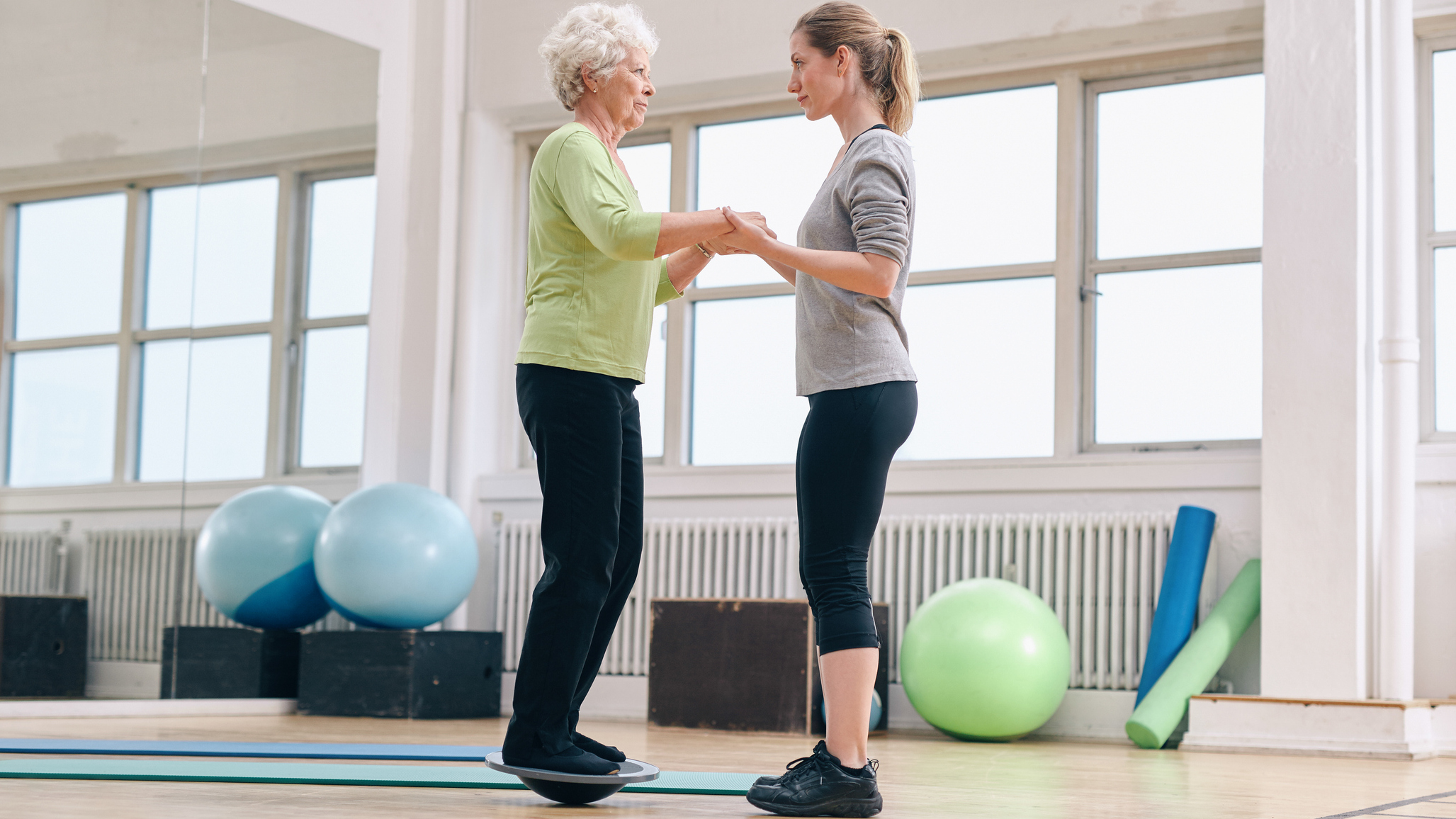
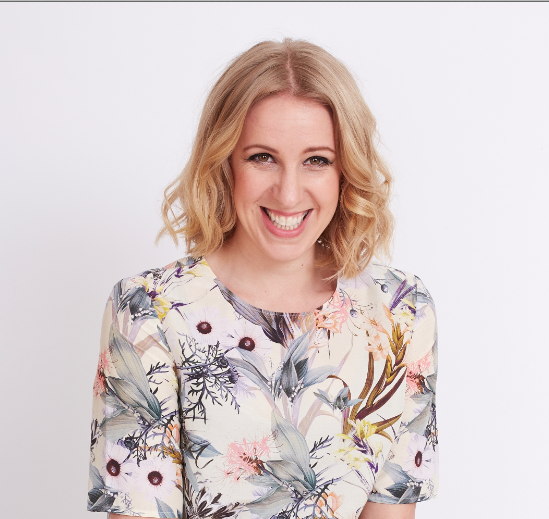
One of the most common questions I get asked by my personal training clients is how they can improve their balance. This is something, like muscle mass, that naturally declines with age and when our balance is compromised, most likely our posture will be, too. The answer is balance training.
Balance training can improve postural control and reduce the risk of ankle strains, particularly for people with chronic ankle instability, according to research in the BMC Sports Science, Medicine and Rehabilition journal, and that’s why I’m such a big fan of the wobble board.
I honestly believe this is the one thing everyone should buy to improve balance and posture. I tried a wobble board challenge for a month and noticed the difference in my balance, and you can get one for as little as $15.99 from Amazon.
So you can get started quickly if you buy one, here's how to get started.
How to stand on a wobble board
The first thing to master is standing on the board. My top tip is to position the board next to a wall or a chair so you have something to lean on or grab hold of to help with your balance at first.
Put one side of the board on the floor and carefully place one foot on it. Engage your core and, keeping your posture upright, place your other foot on the opposite side and slowly shift your weight into that foot until both edges of the board are off the floor. Bending your knees every so slightly can help you steady yourself. This may take a few attempts!
My top three wobble board exercises you should start with
I recommend doing each exercise for 8-10 reps at first, building up to 12 reps over time. For the plank hold, just try and hang on for as long as you can! If you feel that your form is failing—for example, your stomach or hips are dropping—stop the exercise.
Ideally, aim to do this workout three to six times a week for 12 weeks to see an improvement in your balance.
1. Squat
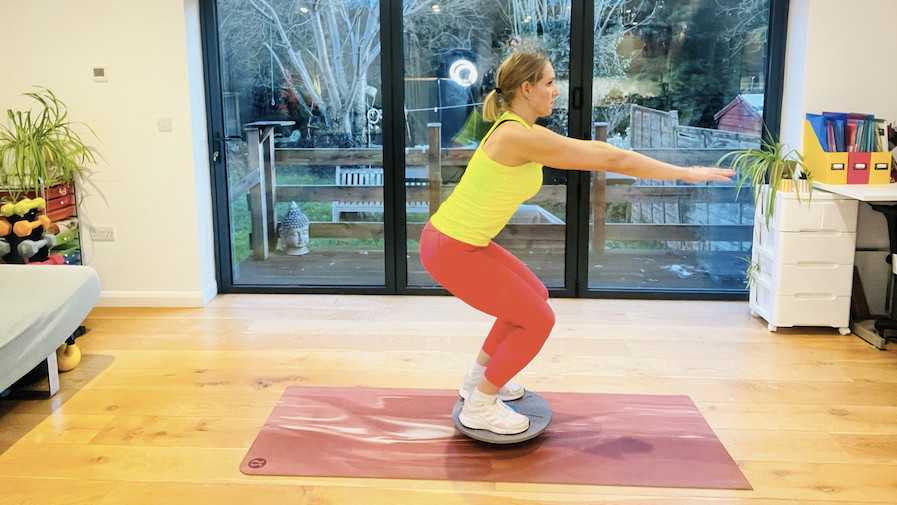
- Stand on the wobble board with the edges off the floor.
- Moving slowly and with control, push your hips back and bend your knees to lower. You may not be able to squat as low as usual.
- You can put your arms out to steady yourself, and be sure to keep the chest upright and core braced.
- Extend your legs to return to standing.
2. Glute bridge
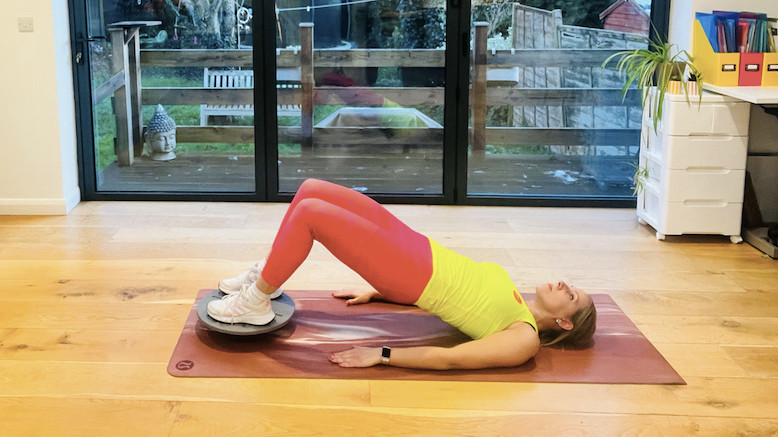
- Lie with your back on the floor, your arms by your sides and your feet on the wobble board.
- Push through your heels into the board and squeeze your glutes to raise your hips until your body is in a line from shoulders to knees.
- Hold for a few seconds then slowly lower your hips back to the start, pressing your spine flat into the floor.
3. Plank
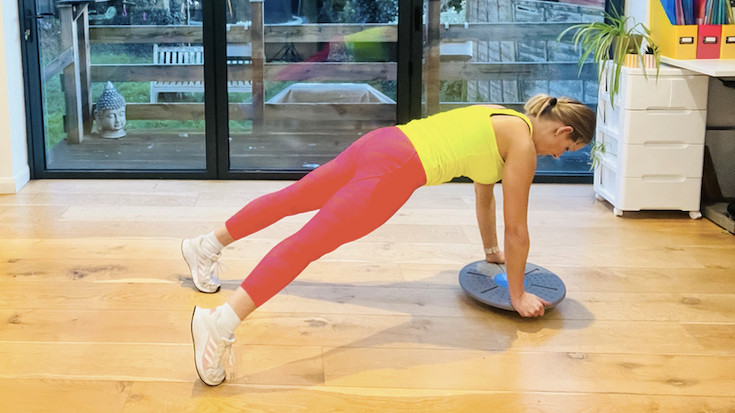
- Kneel and place your hands on either side of the balance board. Extend your arms and make sure your shoulders are directly above your hands.
- Lift your knees so you are on your toes with your feet shoulder-width apart. Your body should be in a straight line from head to heels.
- Hold this position for as long as you can.
- To make this exercise easier, remain on your knees, making sure your body is in a straight line from head to knees.
Why it's worth buying a wobble board
Maintaining balance is crucial especially as we get older because it helps prevent falls and it makes daily activities easier. Balance can be improved at any age—the key is consistent practice—and that’s why I really think it’s worth buying a wobble board.
Get the Fit&Well Newsletter
Start your week with achievable workout ideas, health tips and wellbeing advice in your inbox.
Balance training is particularly effective at building and improving core strength. This is because using a wobble board requires the abdominal muscles to work really hard to control the movement, which builds strength and stamina.
I found it’s also a great way to improve focus and concentration as balance boards engage the body’s vestibular and musculoskeletal systems, as well as proprioception (our awareness of our body's position).
Maddy Biddulph is a freelance journalist specializing in fitness, health and wellbeing content. With 26 years in consumer media, she has worked as a writer and editor for some of the bestselling newspapers, magazines and websites in the US and UK.
She is also a qualified L3 personal trainer and weight loss advisor, and helps women over 40 navigate menopause by improving their physical and mental strength. At Maddy Biddulph Personal Training, she runs one-to-one and small group training for menopausal women who want to get fit to ease symptoms and feel like themselves again.
-
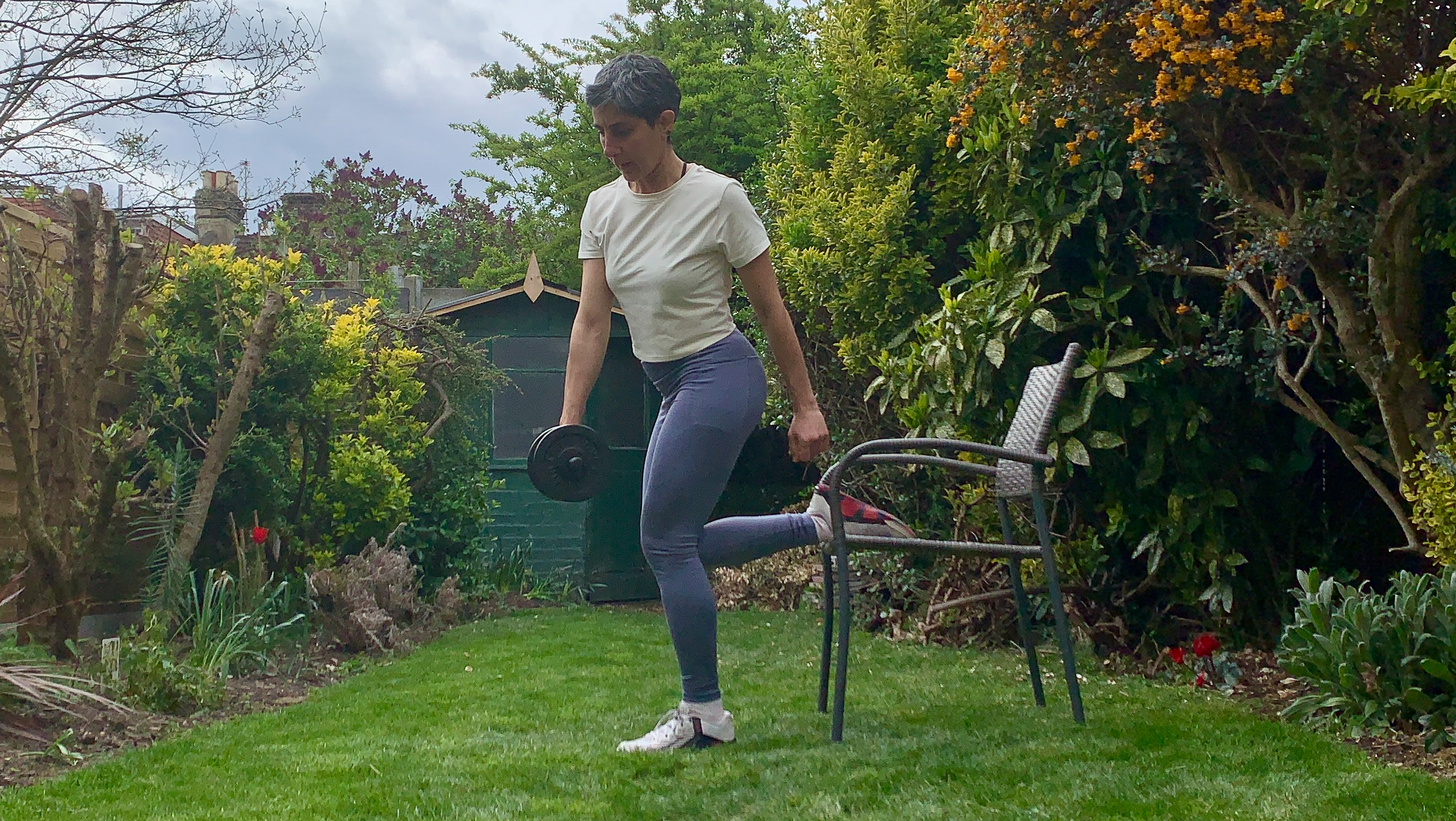 I swapped my usual core routine for this dumbbell workout—here’s why you should try it too
I swapped my usual core routine for this dumbbell workout—here’s why you should try it tooPick up some dumbbells and try my favorite deep core exercises
By Yanar Alkayat
-
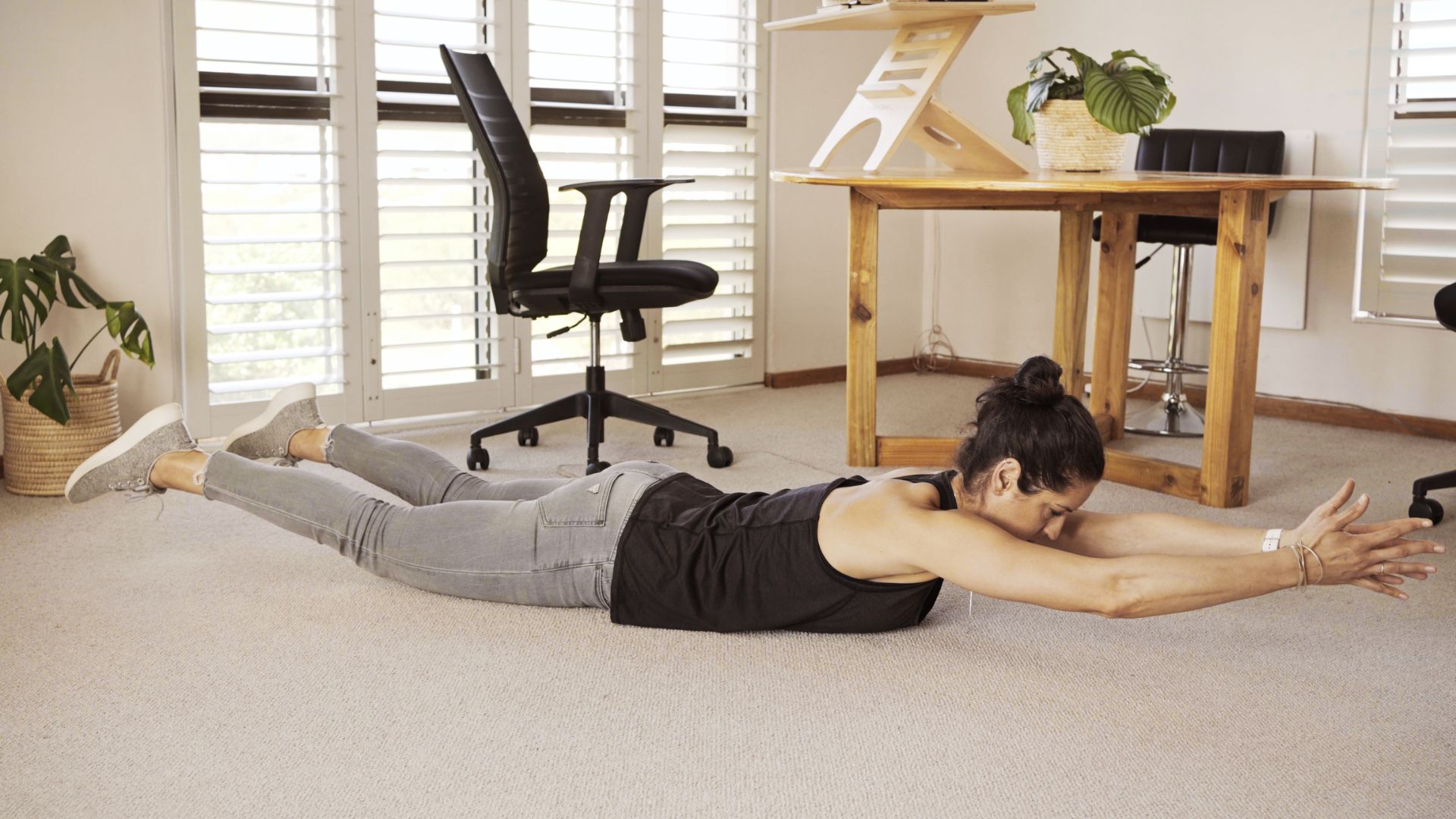 You don't need any equipment to improve your posture—just these three back-strengthening moves
You don't need any equipment to improve your posture—just these three back-strengthening movesThese three exercises will strengthen key back muscles
By Jennifer Rizzuto